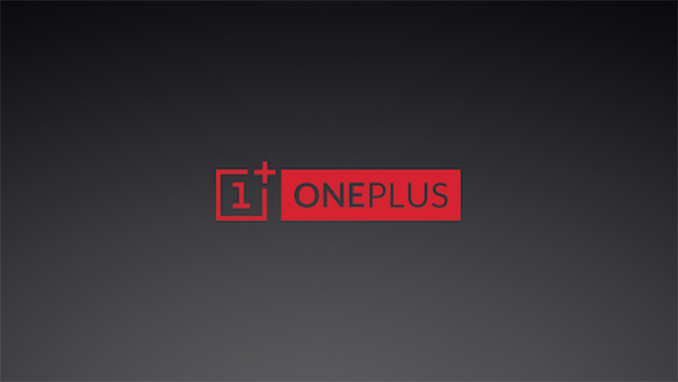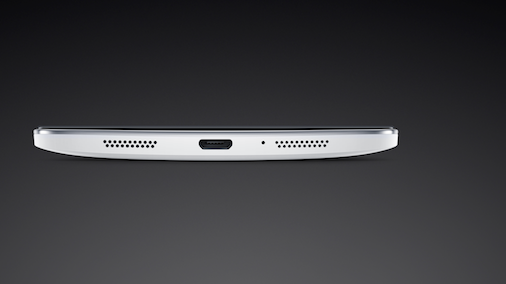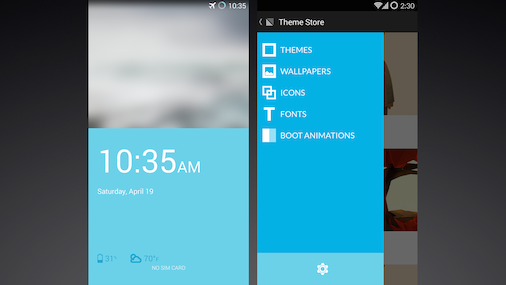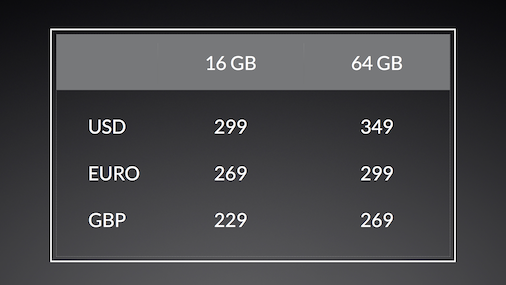OnePlus launches the OnePlus One: Initial Thoughts
by Joshua Ho on April 23, 2014 3:04 AM EST- Posted in
- Smartphones
- Android
- Mobile

Edit: In the time since the initial launch, there's been confirmation that the OnePlus One does in fact support 802.11ac. It's a single spatial stream part, Qualcomm's WCN3680.
In what has possibly been the most hyped-up launch in recent history, OnePlus has finally unveiled their new One. This is a smartphone that shares a great deal with the Oppo Find 7a, and it has been announced that Oppo is the company that will produce this phone. For those that haven't followed this company, OnePlus is a start-up that was founded last year in December by Pete Lau, former VP at Oppo.
To start off, this is a phone with a 5.5" 1080p display from JDI (Japan Display Inc.), and ships with a 2.5 GHz Snapdragon 801, which clearly shows the high-end aspirations for this phone. The rest of the specs can be seen below.
| Oppo Find 7a | OnePlus One | |
| SoC |
MSM8974ABv3 2.3 GHz Snapdragon 801 |
MSM8974ACv3 2.45 GHz Snapdragon 801 |
| RAM/NAND | 2 GB LPDDR3, 16GB NAND + microSD | 3GB LPDDR3, 16/64GB NAND |
| Display | 5.5” 1080p IPS LCD (JDI) | 5.5” 1080p IPS LCD (JDI) |
| Network | 2G / 3G / 4G LTE (Qualcomm MDM9x25 UE Category 4 LTE) | 2G / 3G / 4G LTE (Qualcomm MDM9x25 UE Category 4 LTE) |
| Dimensions | 152.6 × 75 × 9.2 mm, 170 grams | 152.9 x 75.9 x 8.9 mm, 162 grams |
| Camera |
13MP (4128 x 3096) Rear Facing, 1/3.06" CMOS size (Sony IMX214), F/2.0, 5MP FFC w/ F/2.0 aperture |
13MP (4128 x 3096) Rear Facing, 1/3.06" CMOS size (Sony IMX214), F/2.0, 5MP FFC w/ F/2.0 aperture |
| Battery | 2800 mAh (10.64 Whr) | 3100 mAh (11.78 Whr) |
| OS | Android 4.3 with ColorOS | Android 4.4 with CyanogenMod 11S |
| Connectivity | 802.11a/b/g/n/ac + BT 4.0, USB2.0, GPS/GNSS, MHL, DLNA, NFC | 802.11a/b/g/n/ac + BT 4.1, USB2.0, GPS/GNSS, MHL, DLNA, NFC |
| SIM Size | MicroSIM | MicroSIM |
As shown above, the Find 7a and the OnePlus One are extremely similar phones outside of a few key areas, with a thinner and somewhat lighter build on the OnePlus One, along with a larger battery, deletion of the microSD slot and a unibody construction that prevents easily swapping batteries. OnePlus has also detailed their curved back design, which goes from 4.6mm on the edge to 8.9mm in the middle, which means that the design is curved similarly to the One (M8) and other HTC designs, although without the associated pyramidal internal stack that would increase volumetric efficiency for such a design.
OnePlus is also pushing their dual stereo speakers, both of which are placed on the bottom. I'm not too sure what the point of this is though, as the speaker separation is almost nothing, although peak volume can increase through constructive interference.

Going through the marketing materials, there's quite a bit that OnePlus is advertising that isn't necessarily a point of differentiation. Things like Touch On Lens (TOL) and Content-Adaptive Backlight Control (CABC) are commonly used throughout the industry, and TOL has already been supplanted by in-cell touch technologies used by OEMs such as LG and Apple. CABC is a power-saving technique often seen in most LCD-screened phones, and is often identified as dynamic contrast due to some implementations having a visible flicker effect from image to image. The LTPS display is also nothing new, as most LCDs use such technology in order to have manageable levels of power consumption at the high pixel densities that most mobile displays have.The camera is also identical to the one found in the Oppo Find 7a, with no clear differentiation.
What is interesting is the UI, which runs a custom version of CyanogenMod 11. It seems to be a new skin over AOSP, and represents the first departure that I've seen by CyanogenMod from AOSP-UI in a long time. An example of the lock screen and theming application can be seen below. The phone also has a capacitive menu button with no multitasking button, so it'll be interesting to see if this will pass Android CTS as most of the major OEMs seem to have moved to home/back/multitasking configurations despite previously adhering to home/back/menu.

Outside of UI, pricing is also another key differentiator. The phone will come in two colors, silk white and sandstone black. There will also be custom backplates, with wood, kevlar, and denim planned. It seems that based upon the launch presentation that this is a concession done in place of creating a metal unibody design, as issues with RF performance were explicitly referenced. In the US, the 16GB variant will be 299 USD, and the 64GB variant will be 349 USD. At launch, an invite system is in place to handle demand, although it seems that general availability will happen in Q2 2014. Prices for the supported regions can be seen in the photos below.














67 Comments
View All Comments
Alexey291 - Thursday, April 24, 2014 - link
If you have the money for S5 or Z2 (HTC one isn't even worth debating about) you will get either one of those two.This device - while impressively specced SOC wise - isn't really that great.
Software wise - CM11 is simply too buggy and unstable (even their "stable" versions) to be sold to mainstream.
Display is meh, camera's meh, no SD card slot (yes yes 64gb of nand is good - but if the price is anything to go by its going to be crap nand) no replaceable battery.
Just like the Nexus line. You get what you pay for. And since in this case one's paying very little - its safe to assume that even though "at this price its an amazing device" but this statement would only hold at THIS price.
Just like with the Nexus.
jerrylzy - Tuesday, April 29, 2014 - link
“Software wise - CM11 is simply too buggy and unstable (even their "stable" versions) to be sold to mainstream.”Should I remind you that CM11 on other devices is unofficial build but this one is? And I personally used CM11 for a week on my m7 and I didn't find it "buggy" as you said.
"Display is meh, camera's meh, no SD card slot (yes yes 64gb of nand is good - but if the price is anything to go by its going to be crap nand) no replaceable battery."
I don't see any real inferiority from this device's display and camera compared to those of S5. SD card also becomes much more useless when it comes to Android 4.4. Anyone I know who uses a Galaxy has never replaced the phone's battery. When the phone's running out of battery they simply take out their power banks. Compared to unibody design, replaceable battery isn't that worth.
gg555 - Wednesday, April 23, 2014 - link
Other sites are noting a "tri-microphone" set up with the audio. Any chance this means it has the Audience noise cancellation chip, since the latest version can work with three microphones?bleh0 - Wednesday, April 23, 2014 - link
Well the specs and the price sold me. I'm usually a stickler for a removable battery and microsd card slot but at this price I can't complain. I wonder how close to cost they are selling it for.uhuznaa - Wednesday, April 23, 2014 - link
Wow, at these kind of prices for the 64 GB version the lack of an SD card slot really doesn't matter anymore. It's almost tempting to get one just as a toy to tinker with.Now allow installing Android OR WP 8.1 on these things and it gets interesting.
ClockworkPirate - Thursday, April 24, 2014 - link
I'd be very interested in this with WP8.1.ZeDestructor - Wednesday, April 23, 2014 - link
And no news for Australians...FUCKING LAUNCH SHIT DOWN HERE!
Mondozai - Wednesday, April 23, 2014 - link
Europe has a free trade deal with China and Japan. Australia is not quite there yet.Do better!
Flunk - Wednesday, April 23, 2014 - link
That's the biggest reason so many manufactured goods are more expensive in Australia. So many things are made in China.etamin - Wednesday, April 23, 2014 - link
It's like a Xiaomi phone for the US market!Too bad 5.5" is far too large for me. Also, the panel is not IPS so we'll have to see how it stacks up to current displays.